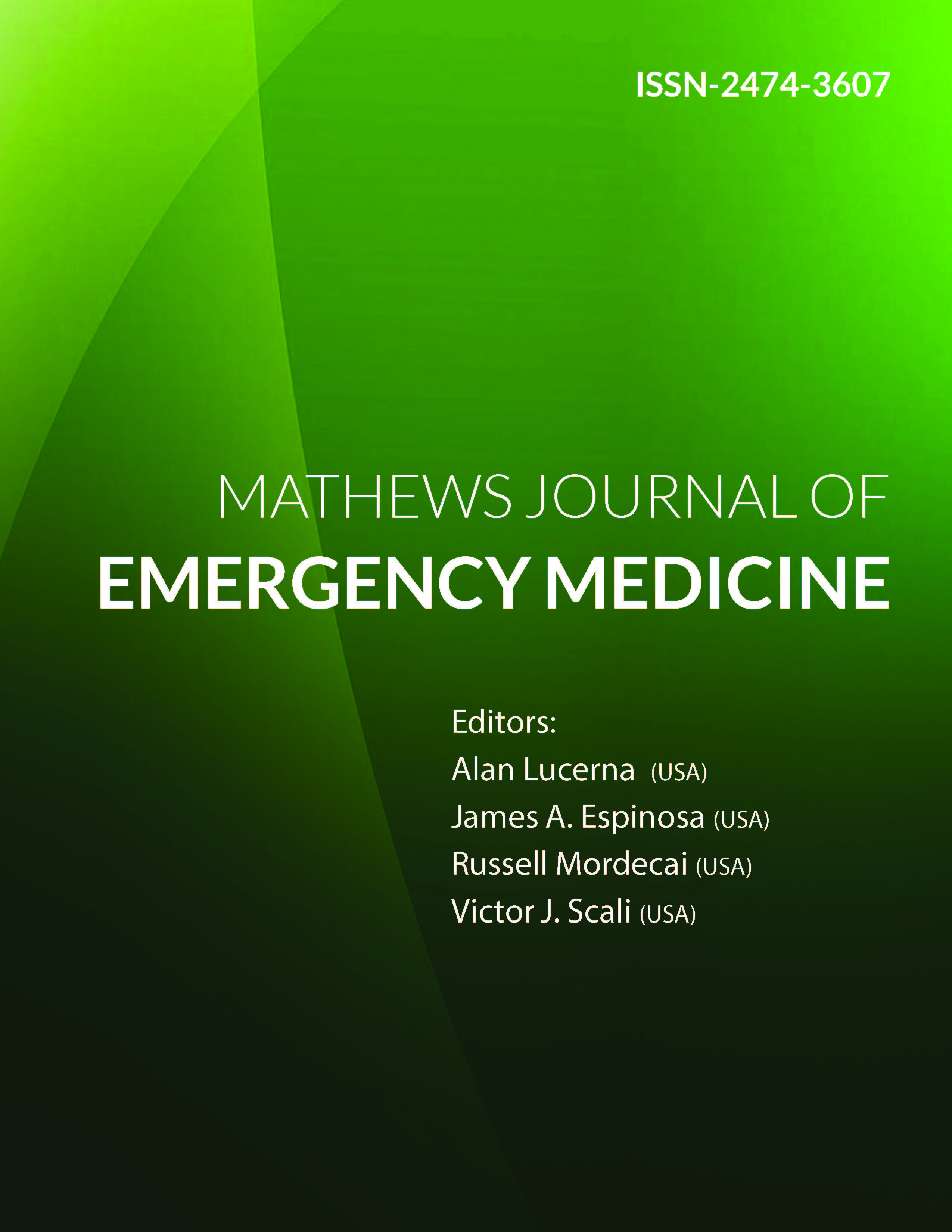
Information Links
Previous Issues Volume 2, Issue 1 - 2017
H. Pylori ED Screening Trial with Bedside Serologic Test: Estimation of H. Pylori Prevalence in Patients Presenting with Epigastric Pain
Victor Scali1, Kenyon W. Sprankle2, James Espinosa3*
1Department of Emergency, Emergency Medicine Residency, Rowan University SOM, Stratford, NJ, USA.
2Department of Emergency, Emergency Medicine Residency, Rowan University SOM [Deceased].
3Department of Emergency Medicine, Rowan University SOM Kennedy University Hospital, Stratford, NJ, USA.
Corresponding Author: James Espinosa, Department of Emergency Medicine, Rowan University SOM Kennedy University Hospital, 18 East Laurel Road, Stratford, NJ 08084, USA, Tel: +1 646 241 5695; E-Mail: [email protected]
In Memoriam: Dr. Kenyon W Sprankle, DO. Friend and fellow emergency physician.
Received Date: 27 Dec 2016
Accepted Date: 19 Jan 2017
Published Date: 24 Jan 2017
Copyright © 2017 Espinosa J
Citation: Scali V, Sprankle KW and Espinosa J. (2017). H. Pylori ED Screening Trial with Bedside Serologic Test: Estimation of H. Pylori Prevalence in Patients Presenting with Epigastric Pain. Mathews J Emergency Med. 2(1): 020.
ABSTRACT
Helicobacter pylori (H. pylori) is a gram-negative bacterium, found worldwide, associated with duodenal ulcers, gastric ulcers, gastric lymphoma and gastric cancer.
Several testing methods are commonly used to detect H. pylori. Some are based on endoscopic biopsy urease testing, histology, and culture of tissue. All of the aforementioned are, of course, invasive. Several noninvasive tests exist. Patients frequently present to the Emergency Department with a chief complaint of upper abdominal pain. Scali et al performed a study of the use of a bedside commercial point of care serology test for H. pylori.
The purpose of this research report is to present the results of this previously unpublished data. A total of 75 patients presenting to the ED with epigastric abdominal pain were studied using a bedside test for H. pylori that was commercially available at the time of the study. 30 of the 75 patients (40%) tested positive by the bedside test. 45 of the 75 patients (60%) tested negative by the bedside test. The two proportions were significantly different. [Test for difference of two proportions p = 0.012, Fischer's exact test: = 0.022] Thus, the prevalence estimate in this study was 40% in patients with epigastric abdominal pain. Of the 30 patients who tested positive, 20 were lost to follow-up, 6 did not fill the prescription provided, and 4 filled the prescription. Of the 4 patients who completed their treatment, 2 were symptomatically improved, with one patient ultimately having endoscopically documented gastritis and the other patient an endoscopically proven duodenal ulcer.
Since the time of this study, it appears that there has been a movement away from similar bedside serological tests, perhaps due to a relatively low positive predictive value. However, the data appear to support the proposition that H.pylori testing, if practical and cost-effective would be helpful to patients presenting to the ED with upper abdominal pain. Non-invasive tests hold the promise of a more rapid diagnosis at a lower cost that endoscopic histological testing. Any strategy to diagnose and treat H. pylori would need to be studied in reference to cost effectiveness of competing strategies-and would need to take into account H. pylori prevalence. Comparative effectiveness of the most current eradication therapy regimes would also need to be studied.
KEYWORDS
Non-Invasive Testing for H. Pylori; Emergency Department Diagnosis of H. Pylori; Estimation of H. Pylori Prevalence in Emergency Department Patients with Abdominal Pain; Abdominal Pain and H. Pylori Prevalence.